How to Invest Series: Jewellery
Uncertainty with Brexit and economic recessions forecast in both the UK and US mean that certain investors are turning their attention away from traditional stocks and shares to a more diversified portfolio. In this series we will be discussing how to invest wisely in Luxury items including; Jewellery, Handbags & Fashion, Wine and Watches; what to look out for and brand names you can trust. Today we will be focusing on how to invest in jewellery.
In the past two years, a string of blockbuster auctions has pushed the price of the most valuable jewels to new highs. However, the volatile and often opaque nature of the jewellery market means that while gems can be a good source of value, careful selection for investment is necessary to be rewarding.
Gemstones:
Diamonds are generally considered the preferred gemstone investment, as they can hold large value in a relatively small package.
However, the market is changing rapidly, with consumers increasingly keen on buying rare, colourful “fancy” diamonds. Fancy diamonds come in every colour including the rarest and most sought after: red, green, pink and blue. Exceptional coloured diamonds have seen an especially pronounced growth trend in the last five to eight years.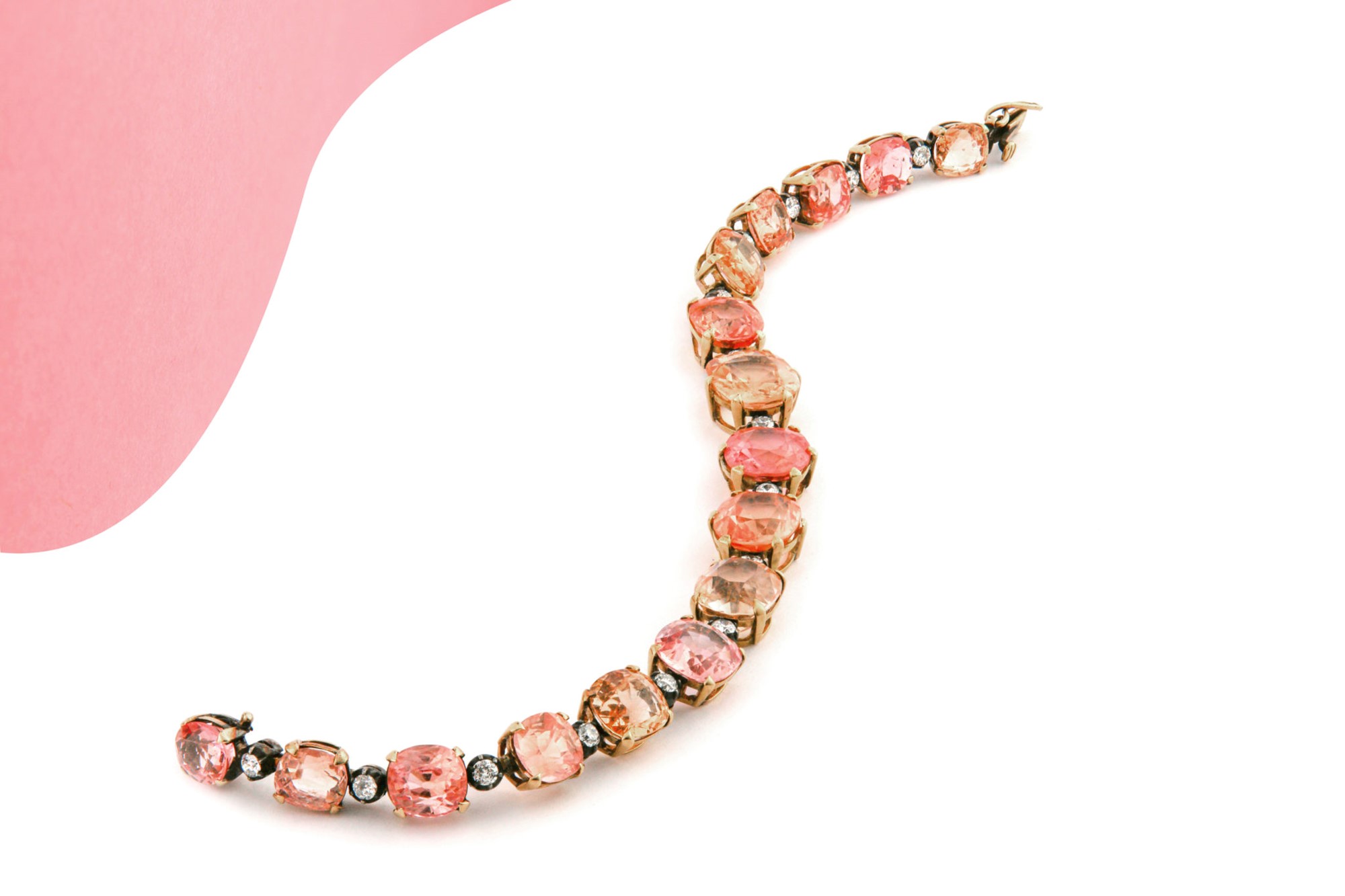
Lot 16. A diamond, padparadscha and fancy-coloured sapphire bracelet, circa 1935, estimate: £2,000 – 3,000
The Four ‘C’s’:
Unlike gold, diamonds do not have a standard price per carat. The value of each stone whether white or coloured is based on a combination of “the four Cs”: carat, colour, clarity and cut; each of these c’s can affect the value and desirability of the stone.
A one-carat fancy vivid blue stone might be worth almost 10 times more than a one-carat fancy light blue stone.
An unmounted Fancy Brown-Pink diamond, sold for £1,100.00 excl. premium in May 2017

An unmounted Fancy Pink-Brown diamond, sold for £1,900.00 excl. premium in May 2017
Coloured Gemstones:
The finest examples of rubies, emeralds and sapphires have enjoyed good price rises over the past decade. At auction we’ve seen a 970% price increase for Kashmir sapphires in the 10 years to July 2018 and a 1,100% rise for certain examples of Burmese rubies.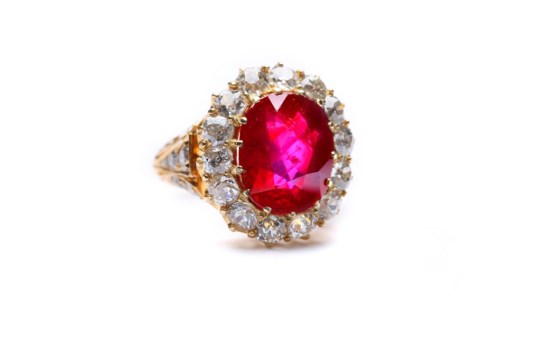
A 6.51 carat Burmese ruby and diamond cluster ring, sold for £147,600 incl. premium, September 2017
We have a fine example of an untreated Burmese Ruby which will be on sale on 17th September, 11am.
Over the same timeframe, the auction houses have seen a 1,900% price increase for the most valuable Colombian emeralds. Such stones have also experienced record-breaking auction sales recently.
Fine quality gemstones can be more valuable than diamonds of the same size. Small and fine is always preferable to large and opaque. You might have a 50-carat emerald, but if it’s full of inclusions, what you want is a 10-carat gem — worth $50,000 a carat — rather than a 50-carat stone that’s worth $10,000 a carat.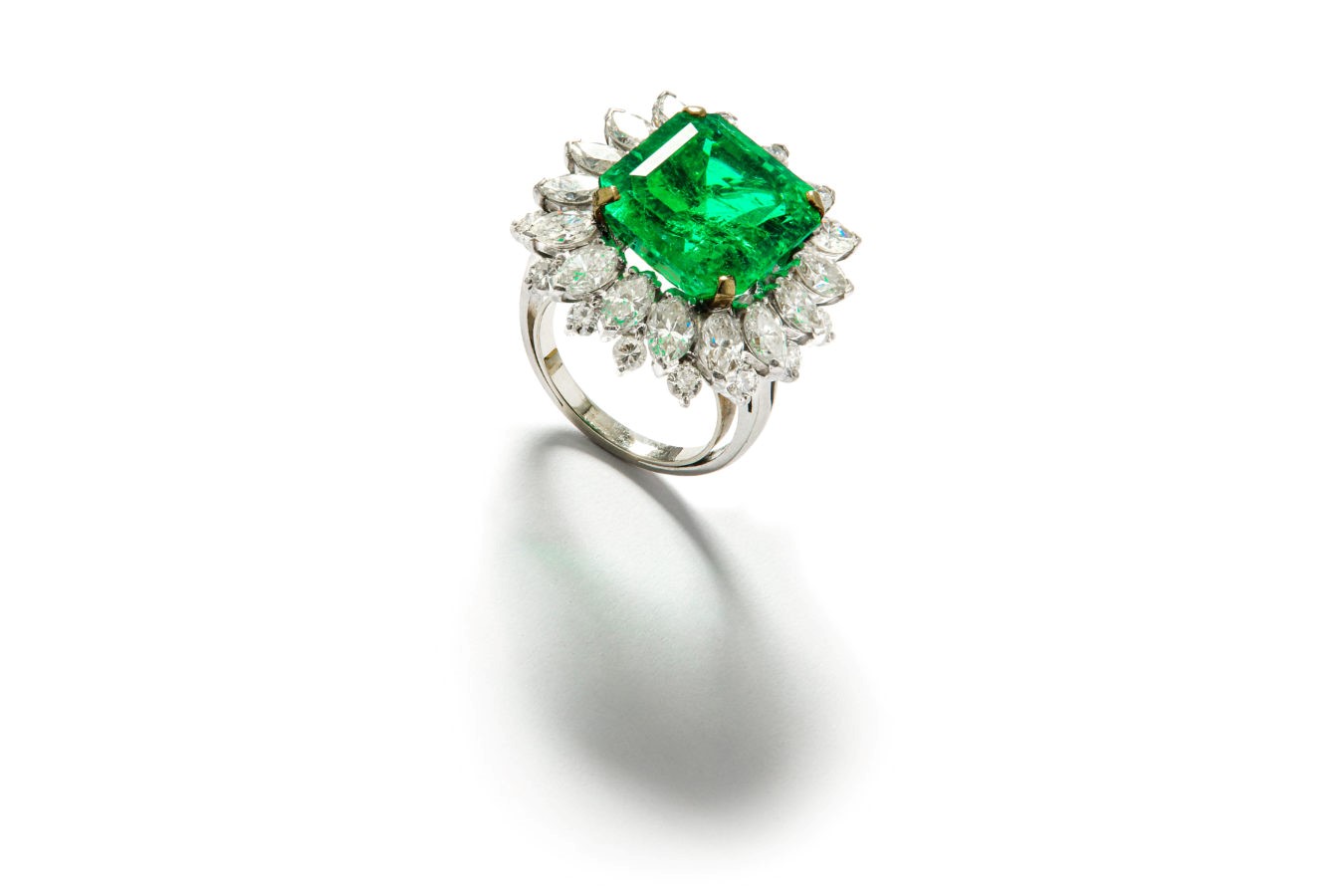
Lot 269. An emerald and diamond cluster ring, estimate: £7,000 – 9,000. Featuring in our sale on 17 September, 11am
Only invest in gems that are accompanied by certificates from trusted laboratories, confirming that they have not been heated, or in the case of emeralds, received only very little treatment.
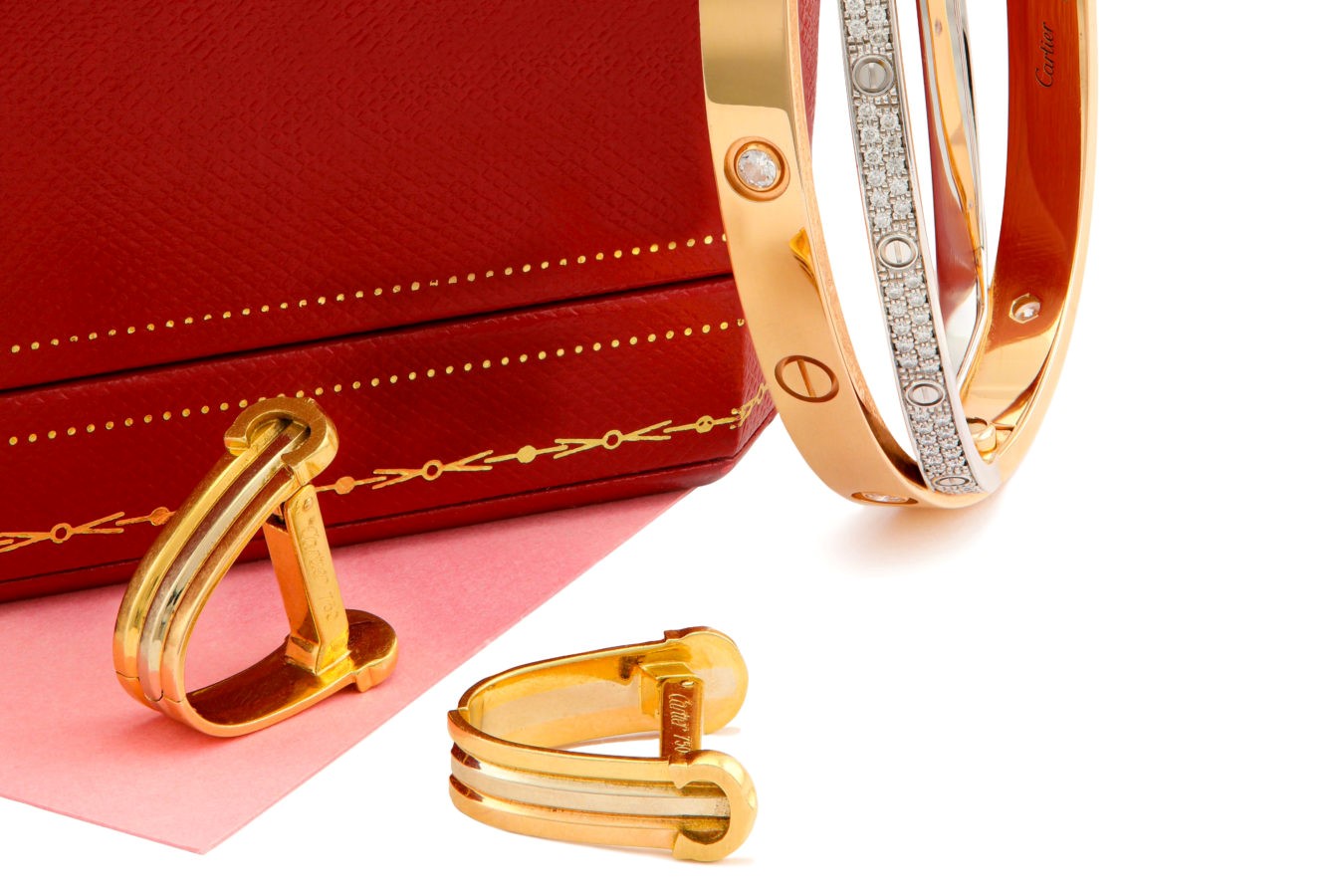
Lot 150. A 18 carat diamond-set double ‘Love’ bangle, by Cartier, estimate: £18,000 – 22,00. The bangle will feature in our sale on 17th September, 11am
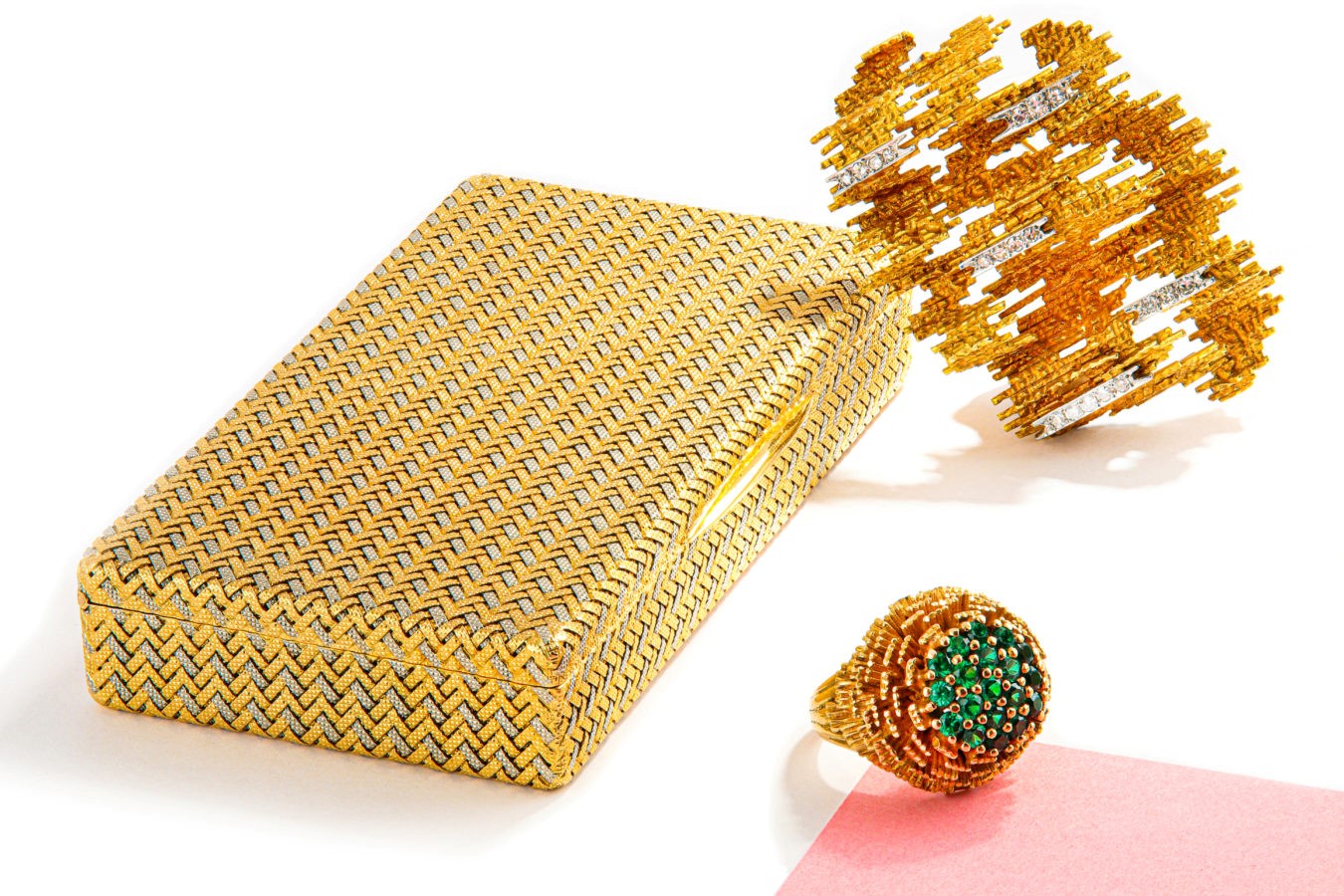
Lot 202. A case, by Van Cleef & Arpels, circa 1965, estimate: £2,500 – 3,00. The case will feature in our sale on 17th September, 11am
Designers:
There are also some jewellery designers that prove a better investment than others. Famous names such as Cartier and Van Cleef & Arpels and especially their pieces from the 1920s and 1930s are highly prized and have been less subject to the whims of fashion.
Periods:
Another good investment option is to collect jewels from a certain period, a well curated collection often sells at a premium, compared to individual pieces.
At the moment there is a renewed interest in jewellery from the 1960s and 1970s, which tends to be in the style of strong bold designs in yellow gold and semi-precious gemstones. Particular designs by Andrew Grima are currently enjoying a renaissance, with values between 180% and 427% over the last 10 years.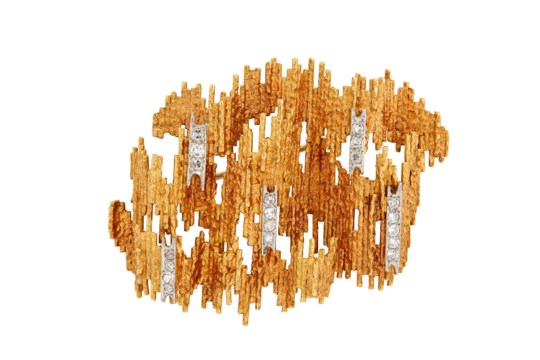
Lot 199. A ‘Textured Wire’ diamond-set brooch, by Andrew Grima, 1965, estimate: £1,200 – 1,500.
The brooch will feature in our sale on 17th September, 11am
Post-war jewellery in general has experienced an 89 per cent rise in values between 2007 and 2016.
Prices for Art Deco and Belle Époque jewellery, which have been fairly constant favourites amongst collectors, rose by as much as 72% between 2007 and 2018.
However, with prices already so high for these periods, would-be investors could be better placed buying jewels from less fashionable times, such as Victorian and Georgian-era pieces. Victorian jewellery, isn’t fashionable at the moment, but there could be a tipping point in future when it starts to be recognised for its quality.
Our top tips for investing in Jewellery are:
- Small, but high quality is better than large, medium-quality stones
- Make sure you get a certificate from a renowned, trusted laboratory for any important gemstones
- Look after them - even diamonds can get damaged if not looked after well.
Jewellery Sale 17 September, 11am
Enquiries
Sarah Duncan
Head of Jewellery
sarah.duncan@chiswickauctions.co.uk